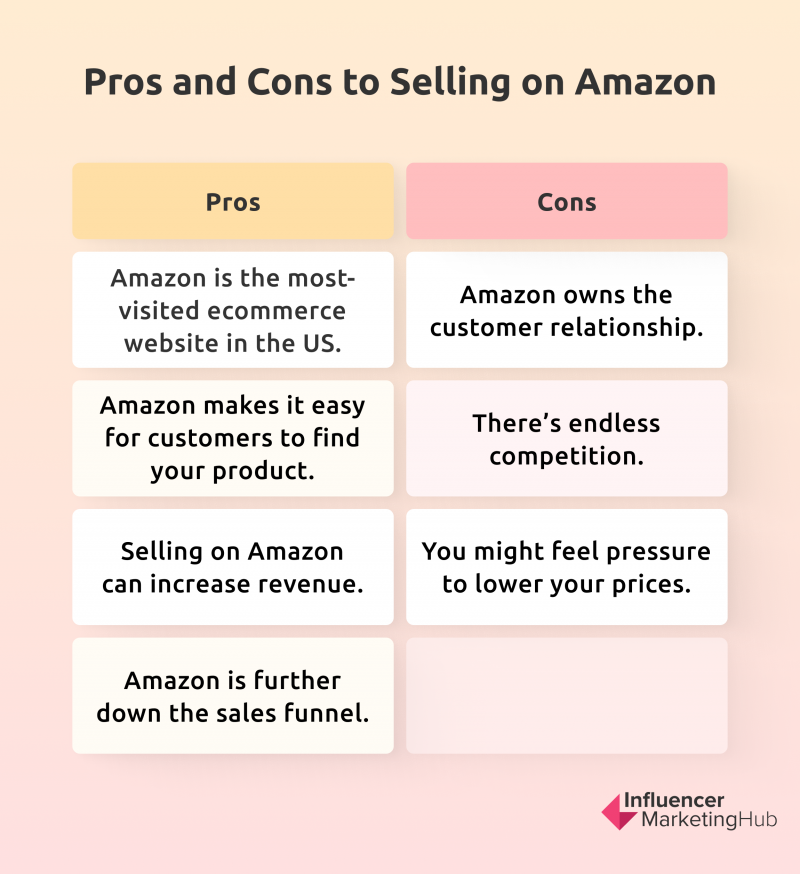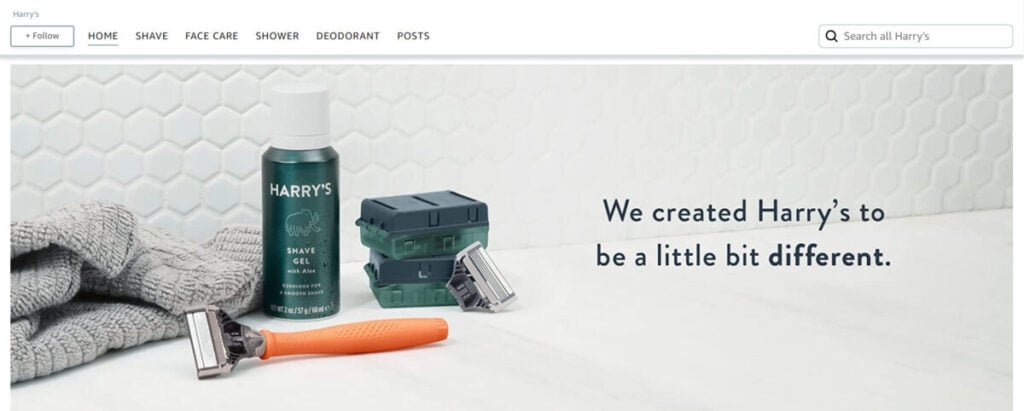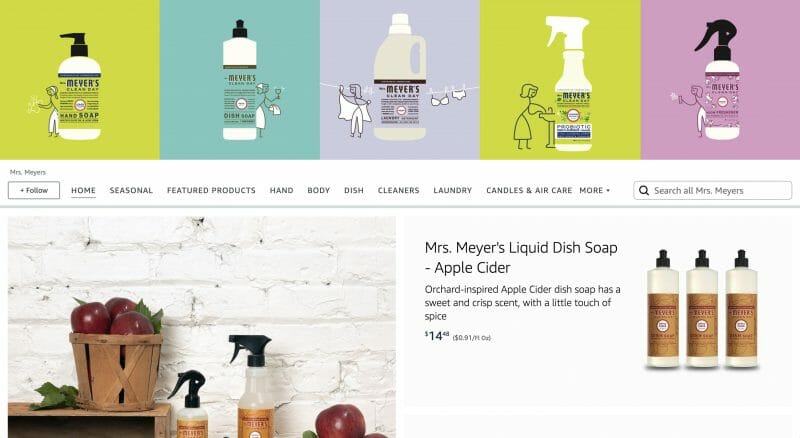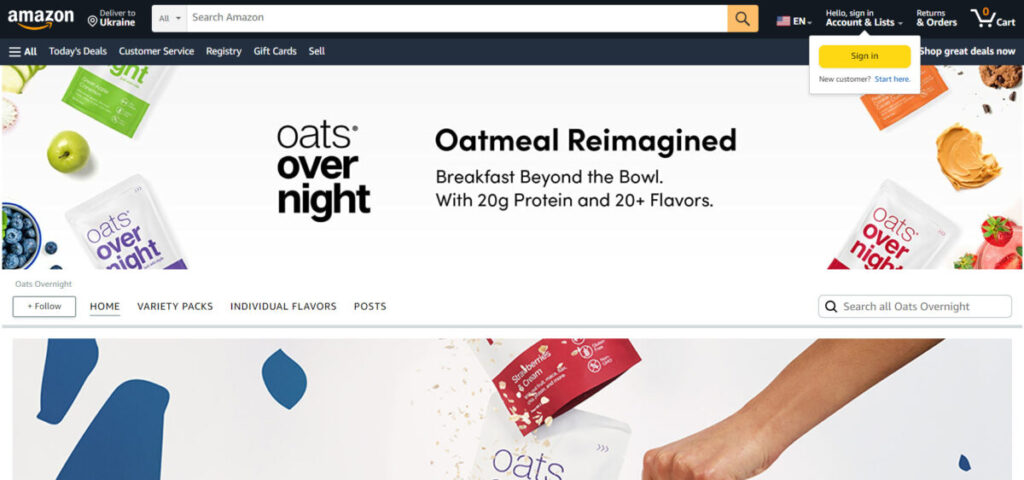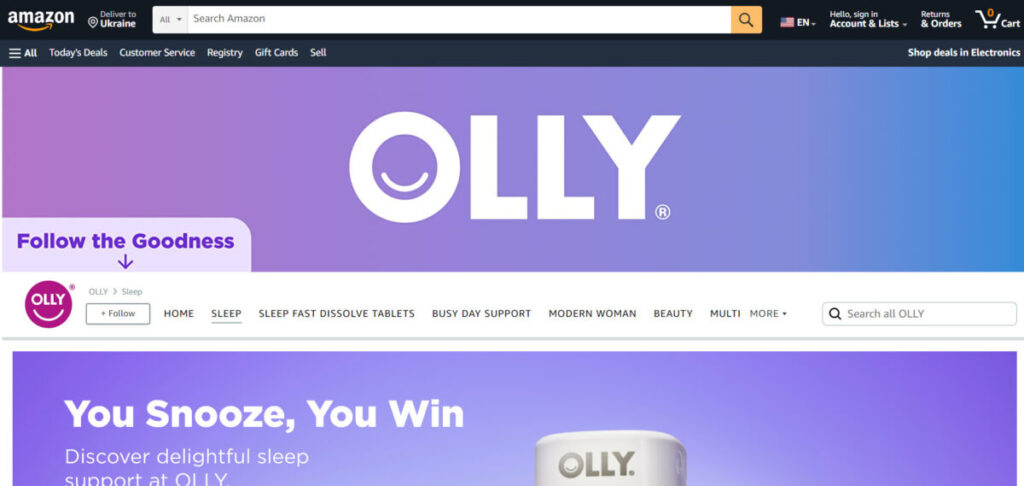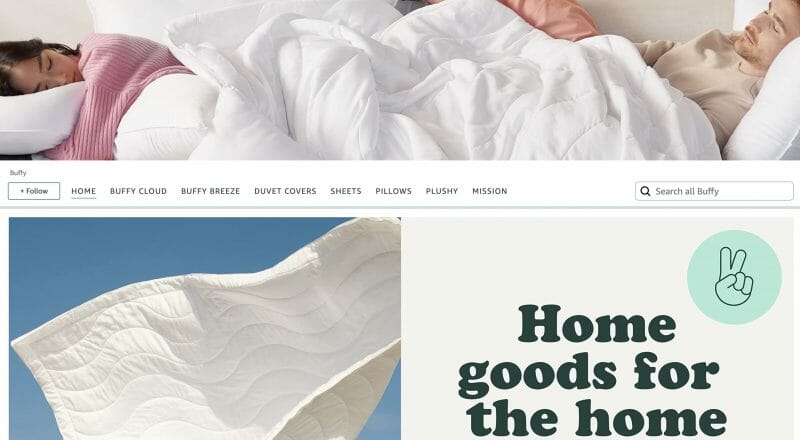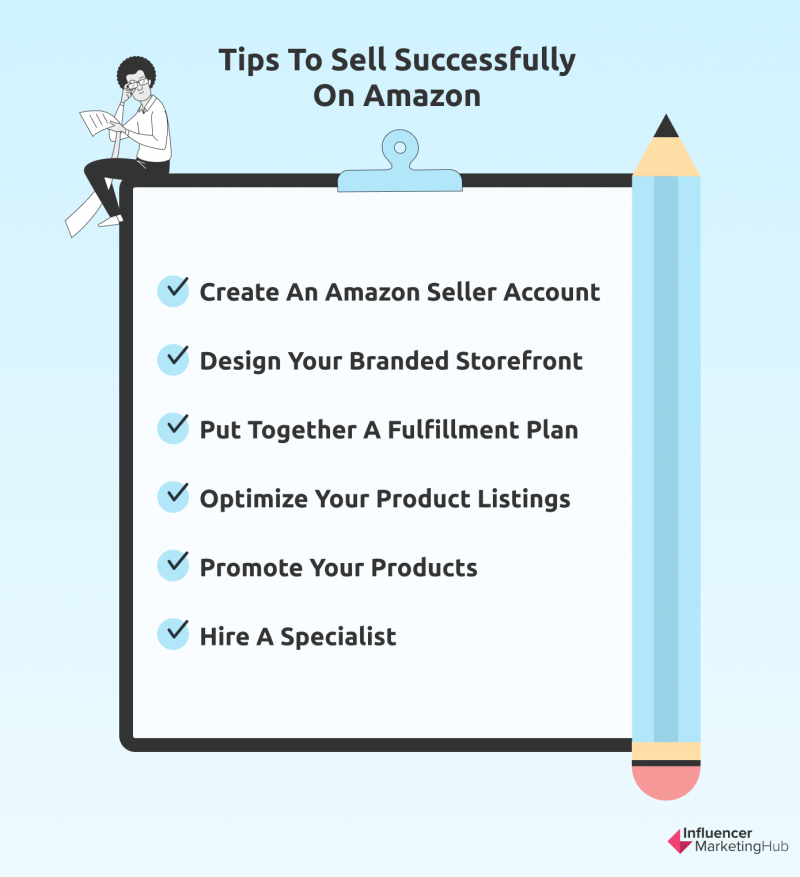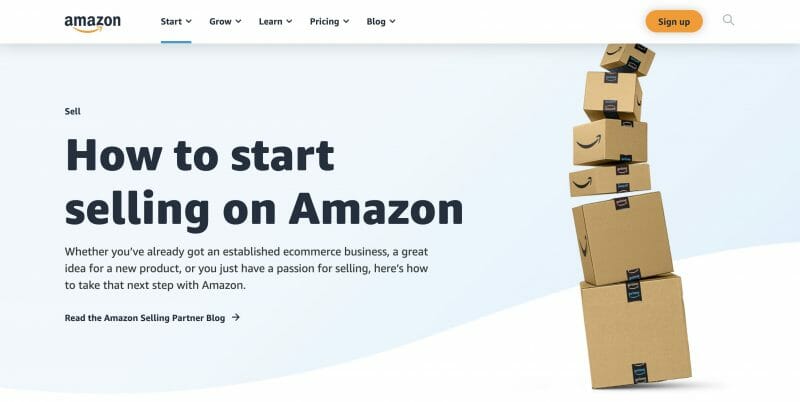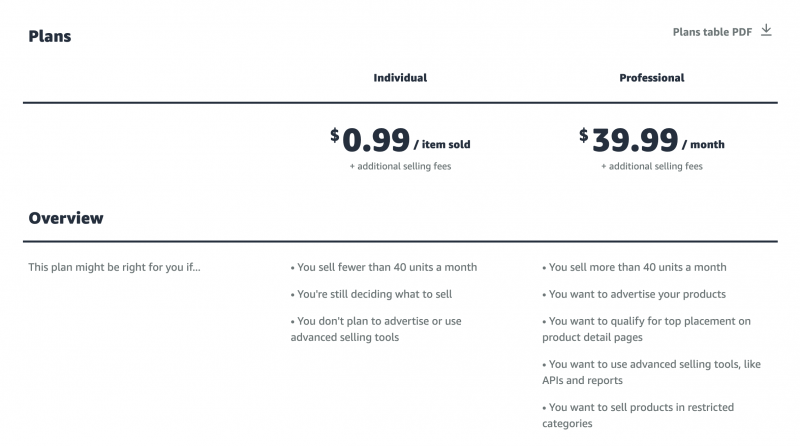Since third-party sellers (or DTC brands) joined Amazon in 1999, they now account for 58% of all Amazon sales. And even with DTC brands selling on multiple channels, 60% say Amazon is their fastest-growing sales channel.
In short, if you’re looking to accelerate growth for your DTC brand sales, Amazon is a great place to start. But how can you get started?
Throughout this article, we’re going to talk more pros and cons of being a DTC brand on Amazon, showcase the top 10 DTC brands currently selling on Amazon, and walk you through setting up your own Amazon store.
Let’s get started.
What is Direct-to-Consumer (DTC)?
Direct-to-consumer or DTC is a business model where a retail brand sells its products directly to its customers, rather than through a third-party retailer like Walmart or Target. While Amazon can be considered a retailer, when brands are managing their own products through an Amazon marketplace account, they’re still in control of their own selling strategy.
Why Would DTC Brands Want to Sell on Amazon?
There are a number of pros and cons to selling on Amazon. Let’s walk through some of the reasons brands would want to create their own Amazon seller account as well as a few cons to be aware of.
Pros
Amazon is the most-visited ecommerce website in the US.
With almost 2.7 billion visits, Amazon.com claims the top spot as the most popular eCommerce and shopping website in the United States. Ebay.com follows closely behind in second place, while Walmart.com takes the third spot, cementing their position as leaders among eCommerce and shopping websites in the country.
Amazon makes it easy for customers to find your product.
Nearly 50% of online shoppers head to Amazon first when searching for a new product. Around half of shoppers use Google search in their quest for finding a new product, so while ecommerce SEO will still be important, so is being Visible on Amazon.
Selling on Amazon can increase revenue.
According to a recent Jungle Scout survey, 50% of Amazon sellers make between $1,000-25,000 per month in sales and 13% make $25,000-250,000 per month. That’s a solid chunk of sales that you can bring in just by building a presence on Amazon.
Amazon is further down the sales funnel.
When someone browses Amazon for a product, they’re probably already in the mindset of making a purchase. This means promoting your product on Amazon has a great ROI and a lower customer acquisition cost than most other channels.
Cons
Amazon owns the customer relationship.
When selling through Amazon, you’re not able to own the full customer journey or relationship. They’re not interacting with your website, your copy and brand design, your marketing messaging, etc. They’re interacting with your brand through Amazon. Many sellers prefer to own the full customer relationship, choosing not to put their products on Amazon and instead selling only through their fully owned channels.
There’s endless competition.
There are so many different brands and product options on Amazon that it can be hard to be seen through the noise. You’re going to need to be patient as your products increase in visibility and get more reviews. You can also pay to sponsor your product in search results on the platform.
You might feel pressure to lower your prices.
When competing with so many other brands on the platform, there can be pressure to keep prices as low as possible—especially because a recent study found that among brands selling both on Amazon and their website.
Top 10 DTC Brands Selling on Amazon
Amazon has been working to entice DTC brands to start selling on their platform for awhile—from inviting CEOs to meet with their team to adding features that appeal to DTC brands and their customers—and many DTC brands have taken the plunge.
In fact, some have taken the plunge that previously said they never would.
Let’s walk through the top 10 DTC brands that are selling on Amazon, what their Amazon storefronts like like, and what kind of success they’re having.
1. Harry’s
Back in 2019, Harry’s CEO had absolutely no plans to start selling on Amazon. Flash forward to today, and they’ve got their Amazon storefront all set up, including subscription plans and organized by collections.
Although their products are still available on their own website and via retail partnerships like Walmart and Target, Harry’s ultimately decided to launch their own Amazon storefront as well.
2. Caraway
Caraway also launched its own Amazon storefront in March 2022. Having started as a DTC brand in 2019, Caraway has worked on some of its own retail partnerships with retailers like Bed Bath & Beyond and Crate & Barrel.
The main reason behind Caraway’s decision to start selling on Amazon is the ability to create a branded storefront. As you can see above (and with each other brand we’re highlighting), Amazon allows brands to customize their storefront with their own banner design and other visual elements that match their brand.
3. Mrs. Meyers
Cleaning product brand Mrs. Meyers has also created its own Amazon storefront, complete with a brightly colored banner and a number of product collections. This makes it easy for interested shoppers to browse specific Mrs. Meyers products on Amazon.
When shoppers search for the brand or other related keywords, a “Shop Mrs. Meyers” call-to-action pops up at the top of the search results, leading customers directly to the storefront to explore all products.
4. Fly By Jing
Fly By Jing is a Chinese condiment startup that created its Amazon storefront in 2021 and hired an Amazon channel manager this year to help them promote its store and increase sales through the ecommerce giant.
Since their start on Amazon, the channel has made up about 15% of their total sales, proving its effectiveness as a sales channel. These sales have been organic to date, but with their hire of an Amazon brand manager, they should be able to increase that easily.
5. Oats Overnight
Oats Overnight joined Amazon as a part of their emerging brands initiative, where Amazon offered certain brands the free services of their brand managers to help them get off to a solid start on Amazon.
While many brands reported only seeing results during the first year, Oats Overnight disagreed and continued using Amazon’s services. Co-founder Frank Gu said, “Amazon wants you to do well, because if you do, they do. Our performance spoke for itself.”
6. Olipop
Olipop has done a great job of creating an engaging Amazon storefront for its products. By using stunning product photos, videos and GIFs, and a number of product links, it’s made shopping via their Amazon storefront a very similar experience to shopping on their own website.
This is the goal of Amazon’s customizable storefronts. It acts as an extension of DTC brands’ own websites, allowing them to create a cohesive shopping experience across the board.
7. Olly
Supplement brand Olly has its own Amazon storefront that the brand has dedicated a large portion of its ad budget towards promoting. Olly’s director of marketing communications shared that the brand has started putting ad dollars behind initiatives on platforms like Instacart and Amazon.
On Amazon, specifically, Olly puts a large portion of its ad budget towards promoting its products in search results and Amazon’s DSP (demand-side platform) in order to reach new audiences on the channel with its products.
8. Buffy
Comforter brand Buffy agreed to sell its products on Amazon as well, but under one condition—they still wanted to be able to use their own packaging. As most brands send their products to Amazon’s fulfillment centers when they start using the platform, this can be tricky. However, according to Buffy’s CEO, it’s a perk that Amazon offers for some of its more popular or “upper-tier” brands.
9. Your Super
Your Super has been promoting its products across its website and Amazon for the past four years, and has seen such success it’s looking to gain retail partnerships with retailers like Target, CVS, and The Vitamin Shoppe. Having done $60 million in sales through its own DTC channels (Amazon included), the brand is excited to branch out and grow even more.
10. WellPath
Another big supplement brand WellPath saw great success with its launch and promotion leading up to Amazon’s Prime Day. Amazon worked with them on a launch strategy for a line of apple cider gummies, exclusive for Prime Day.
Turns out, the strategy worked, as they sold out of the gummies completely by 1 am on the first day. By creating a three-week lead-up strategy, they were able to generate buzz well ahead of the sale. Founder Colin Darretta said, “Where people go wrong is when they think by virtue of listing your product on Amazon people will come. You need a coherent Amazon strategy that they can help supercharge.”
How to Successfully Sell on Amazon as a DTC Brand
If you’re looking to increase sales, Amazon can be a great way to do that. Omnichannel marketing and sales strategies help brands grow and increase sales—so building a presence on Amazon can be a smart idea, regardless of its stock value dropping.
To sell successfully on Amazon, follow these tips and best practices.
Create an Amazon Seller Account
The first thing you need to do is understand seller requirements and create your account so you can get started. Head to sell.amazon.com to learn more about selling, check out their available plans, and sign up for your own account.
There are two plan options to choose from:
- Individual: Pay $0.99 for each product you sell
- Professional: Pay $39.99 per month
Amazon covers some basic points to help businesses choose which plan is the best option for them.
Sign up for your preferred plan to start selling. You’ll need the following information:
- Business email address OR Amazon customer account
- Credit card
- Government ID
- Tax information
- Phone number
- Bank account
Design Your Branded Storefront
Next, you’ll want to create a branded storefront like the examples we saw above. Start with a hero image for the top of your storefront—optimal dimensions are 3000 x 600 px. You might also want to create tiles that promote different products or collections as viewers scroll down your storefront.
Add your logo, make sure all of your graphics match your branding, and input your products. Customize the storefront to put your most popular products towards the top so users don’t have to scroll as far. Finalize your storefront and get ready to put it in front of your customers.
Put Together a Fulfillment Plan
How will you send out your products? If you want to, you can always fulfill your own orders. However, if you want to take advantage of Amazon Prime, you’ll need to have product in an Amazon fullfilment center.
Amazon has also launched a new Buy with Prime option for ecommerce businesses to place on their websites, take advantage of Amazon fulfillment, and offer one- or two-day shipping to their customers.
Optimize Your Product Listings
Just like every website with some type of search engine (think Google, Pinterest, YouTube, etc.), you need to understand that search engine’s optimization rules—and Amazon is no different.
According to Amazon itself, there are seven key parts for optimization:
- Keywords
- Product images
- Product titles
- Product pricing
- Product descriptions
- Key features (use bullet points)
- Backend search keywords
Make sure you pull popular keywords people use to search for each of your products and include them in the product title and/or description. Use clear, visually appealing product images and more sure your product listings are ready to sell.
Or, you can use a software that can help you gain a higher ranking, drive more traffic to your products, and ultimately increase your sales and revenue. A great example of this is Pacvue Commerce, an enterprise platform to help with various aspects relating to eCommerce and with a strong focus on Amazon.
It offers a number of powerful tools and features to help Amazon sellers optimize their product listings and improve their search ranking on the platform. It also offers keyword recommendations to help you optimize your campaigns, one of the main features why Amazon sellers choose Pacvue. Other reasons why Pacvue is such a popular platform among DTC brands is its budget pacing and alerts, AI optimizations, and category intelligence.
Promote Your Products
Amazon offers promotion options like Sponsored Posts and Amazon DSP (demand-side platform) that help you reach new audiences. Be sure to put some of your ad budget behind promoting your Amazon storefront and products in order to make sure you’re actually getting eyes on your products and starting to generate revenue through this new channel.
Hire a Specialist
Consider taking a page out of Fly By Jing’s book and hiring your own Amazon channel manager whose main role is to put eyes on your Amazon products. While it might be a big cost upfront, the ROI once they increase your Amazon sales should skyrocket.
Build Your DTC Brand With Amazon
Let Amazon help you increase sales and awareness this year. Start creating your own Amazon seller account to add this site to your brand’s available sales channels. And discover even more DTC strategies that will help your brand explode.
Frequently Asked Questions
What is Amazon DTC?
Amazon DTC is when DTC brands create seller accounts and add Amazon to one of their sales channels. This helps increase sales and awareness for the brand.
Do DTC brands sell on Amazon?
Yes! Many DTC brands do. In this article, we covered 10 of the top Amazon DTC brands to watch out for.
Why do some brands not sell on Amazon?
Some brands prefer to own the entire customer journey and relationship. They want to sell through their channels, rather than through a retail site.
What can you not sell on Amazon?
There are a number of restricted products that either cannot be sold on Amazon or require additional approval. Some of these include:
- Alcohol
- Currency
- Explosives
- Weapons
- Animals
Is it profitable to sell on Amazon?
It certainly can be! 65% of all Amazon sellers bring in at least $1,000 per month, with 13% bringing in more than $25,000 per month.
